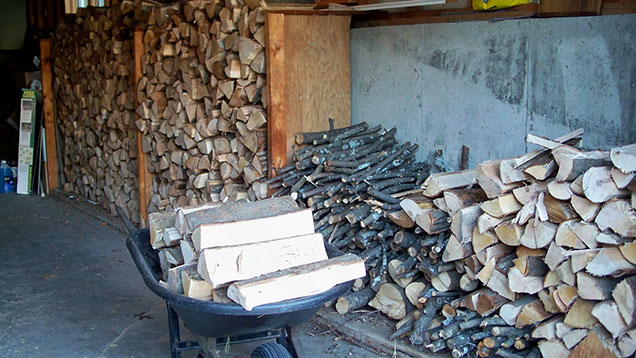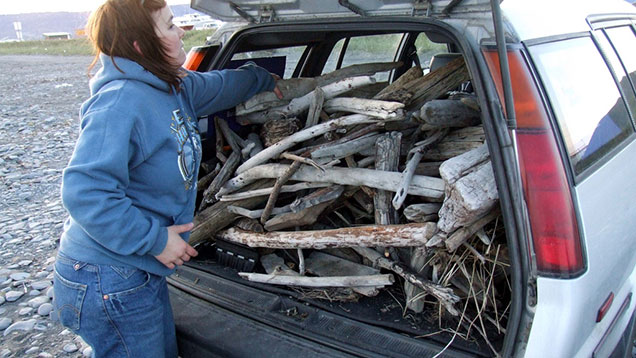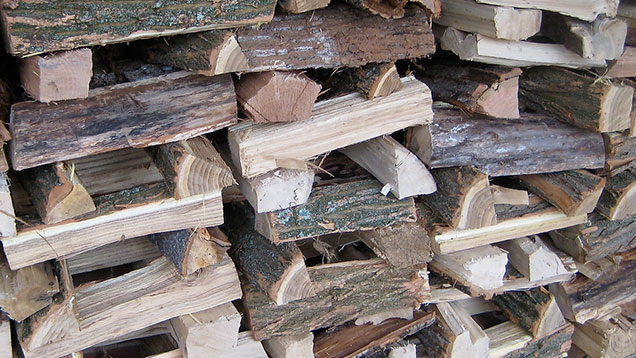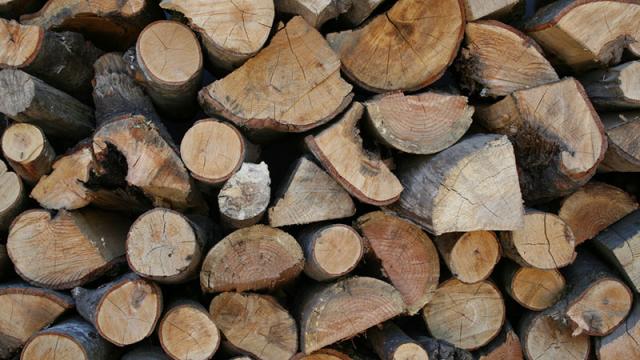It might be Spring, but there’s still a chill in the air in many parts of Australia — and plenty of stormy nights are sure to be on the horizon. Here’s how to pick and prepare the best burning firewood.
Photos by Tom Brandt, Rob, mwms1916, and Travis
The Drier the Better
A rule of thumb for firewood: The drier, the better. Wood consists of small tubes that deliver water from the roots into the trunk and branches of the tree. These tubes can retain water for months after wood has been cut. Moist and water-laden wood will not burn properly. Energy from the fire will have to dry the wood first which is wasteful, and the smoke and fumes from green (freshly cut wood) is a stronger pollutant.
Seasoned firewood is dry and cut into pieces that will be easier to carry and build a fire with.
How to Select Firewood

If you buy firewood from a retail store, follow these tips to ensure you are picking the best wood:
- Make certain the area where the firewood is stored is a dry and well-ventilated location. It can be outdoors as long as it’s covered and not in an area that can get flooded.
- Look for dark to grey coloured wood, which will signify older and drier wood.
- Bang a few logs together. If they sound hollow, that’s a good thing.
- The wood should be light, which signifies little to no water.
- Look for wood with cracked ends, which means it’s dry.
- Pick the pieces with the bark missing or pulling off. Bark needs moisture to adhere to the wood.
- Don’t choose the newest wood from the top of the pile. Dig a bit and pull the oldest looking wood you can find.
The best burning firewood is not only dry but dense. Nut bearing trees like oak and hickory are hardwood and very desirable as firewood as they burn cleaner and longer. Softer woods like pine and aspen will burn through faster.
Firewood sold from distributors are sold by volume as a measurement called a cord, which is 39 cubic metres of wood (2.4 metres long, 1.2 metres tall, 1.2 metres deep). Depending on how much firewood you use in the winter, this can get most people through a season. If you need less wood you can buy it as a “face cord” or “rick” which is 2.4 metres long, 1.2 metres high, and as deep as the length of the wood.
Green cords are also sold at a lower price. Buy in the Spring and Summer to get a discount, too.
How to Forage for Firewood

It can be a fun excursion to forage for your own firewood. Start the process in the Spring or Summer so the wood has plenty of time to dry out before you use it in the winter. Check your state laws before heading into the forest, too.
The best wood is pulled from low hanging branches that snap off easily which means the branch is dead. Dead wood found on the ground can be a great score, but can also be full of water.
Identify the hardwood and nut-bearing trees in your area and focus on wood from those trees. Grab a few softwood pieces, as they ignite easier and are best for kindling.
If you plan on cutting fallen trees (log bucking) and chopping your own firewood, you should be very familiar with how to use a chainsaw, wedge, sledgehammer, and splitting maul. This article from the Natural Handyman will take you through the basic steps of cutting your wood.
How to Stack and Store Firewood

Once you’ve acquired the best wood you can find, you need to stack it and store it the proper way.
Wood should preferably be stored inside a shed that is protected from the weather. If kept outside, make sure the wood is covered by a tarp and raised a bit off the ground.
Firewood should be stacked in a crisscross pattern at each end of a pile then laid lengthwise across each other (see above). This creates a stable and well-ventilated wood pile that you can easily pull from during the winter. You can find some other effective techniques here.
When it comes time to build that fire, we have tips for you there, too.

Comments
4 responses to “How To Pick The Best Firewood For Clean-Burning, Long-Lasting Fires”
Redgum burns the best, and when its dry its still not light.
probably burns better than oak or hickory, but I can’t find any oak or hickory trees nearby to test.
Who has the time to stack wood in a crisscross manner? just tetris the logs into a ventilated shed, and leave it there for 6 – 12 months before burning it
Malley roots and redgum.
But seriously, it’s a few weeks from Summer and any dickhead who lights a fire in our summer really needs to be gaoled.
Well, unless it’s a gas fire BBQ in a permitted area.
@precisa
i find jarrah burns better than red gum. my dad was getting rid of about 40 jarrah railway sleepers when he did up his back yard. i cut them all up for our fire, burn so hot, and because its dense, it burns long too. i used to walk around in shorts and singlet when we used jarrah for firewood, i havnt been able to do that with red and blue gum, or any other wood.